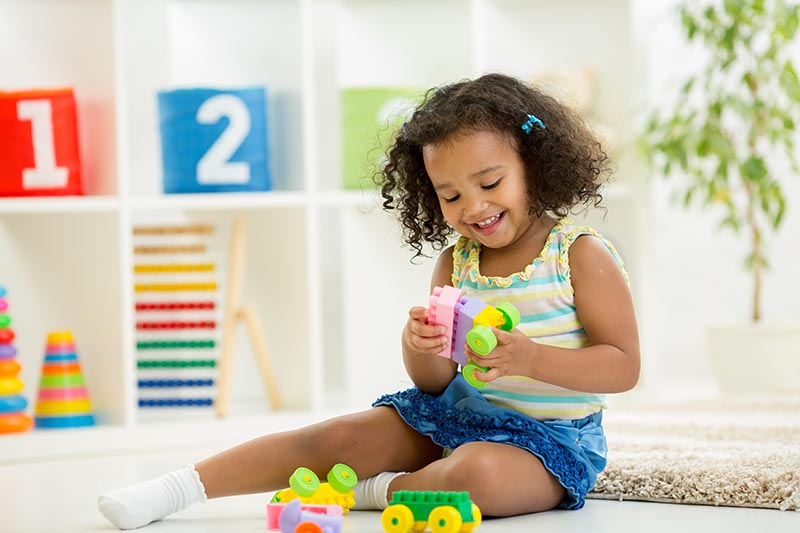For children, play is never simply play. When a child runs past a tree and jumps to touch a leaf, they aren’t just playing. They are learning spatial reasoning, physics, the bounds and abilities of their bodies, and much more. Children learn, explore the world, and practice life skills through play. All of the six main areas of child development revolve around play and independent exploration of themselves, the world, and those around them. The National Association for the Education of Young Children notes that play influences development in language, executive functions, math and spatial skills, scientific thinking, and social and emotional development.¹ Play is the building blocks of learning, allowing children to discover for themselves how to process what they are exposed to, as well as how to communicate it to others. For example, when a child plays with blocks, they foster imagination, creativity, physics, fine and gross motor skills, and more. If an adult or other child joins them, even more learning takes place, adding social interaction, communication, expectations, and boundaries. Using play as a conduit for therapy employs a child’s natural learning style and comfort zone. Play therapy helps children with trauma, anxiety, ADHD, and other issues that children cannot understand, communicate, or work through on their own. Therapists use two methods—giving children materials and observing how they interact or directing an activity and observing the results. This version of therapy most commonly helps children from the ages of 2-12, says the Association for Play Therapy.² Play therapy combines relevant play and activities to help children communicate and understand their feelings. This processing happens through a child’s base mode of learning—play. According to Psychology Today, “…play therapy is a psychotherapeutic approach primarily used to help children ages 3 to 12 explore their lives and freely express repressed thoughts and emotions through play.”³ Play therapy provides opportunities for therapists to watch and interact with the child on their own playing field. All of children’s behaviors are a form of communication. What does communication look like in play therapy? Professional play therapists choose activities based on age, developmental level, and the cause of treatments. Sand tables and puppets, among others, use children’s developmentally-appropriate outlets and comfort zones to facilitate communication. Play therapy means using a child’s language to hear what they really need to say. To learn more about how we can help you, contact us here. References:
- Hassinger-Das, Brenna, Kathy Hirsh-Pasek, and Roberta Michnick Golinkoff “A Case of Brain Science and Guided Play: A Developing Story” NAEYC May 2-17 https://www.naeyc.org/resources/pubs/yc/may2017/case-brain-science-guided-play
- Lilly, JP, Kevin O’Connor, and Teri Krull, “Why Play?” Play Therapy Makes a Difference, Association for Play Therapy https://www.a4pt.org/page/PTMakesADifference
- “Play Therapy” Psychology Today, Sussex Publishers, https://www.psychologytoday.com/us/therapy-types/play-therapy
